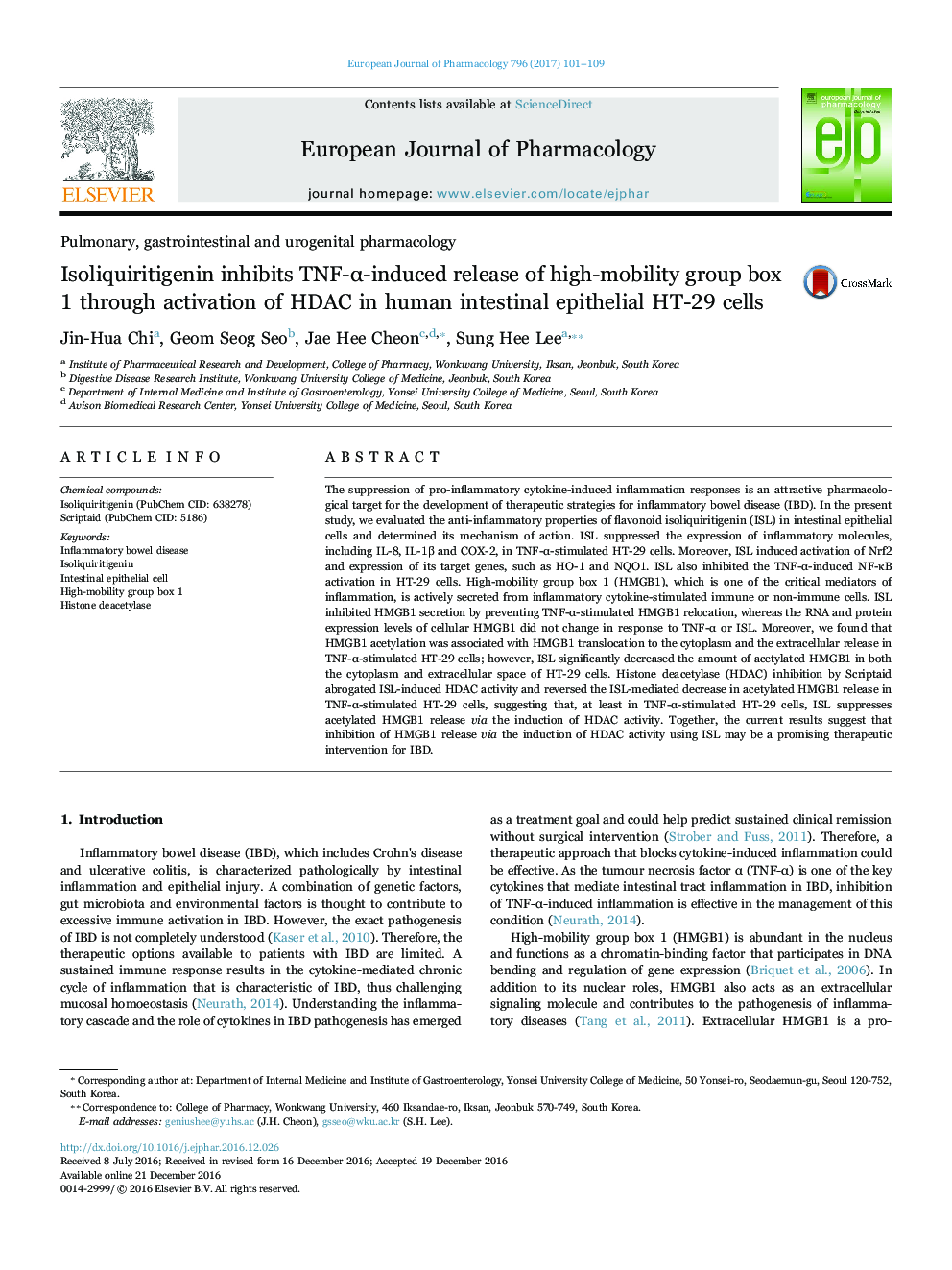| Article ID | Journal | Published Year | Pages | File Type |
|---|---|---|---|---|
| 5554882 | European Journal of Pharmacology | 2017 | 9 Pages |
The suppression of pro-inflammatory cytokine-induced inflammation responses is an attractive pharmacological target for the development of therapeutic strategies for inflammatory bowel disease (IBD). In the present study, we evaluated the anti-inflammatory properties of flavonoid isoliquiritigenin (ISL) in intestinal epithelial cells and determined its mechanism of action. ISL suppressed the expression of inflammatory molecules, including IL-8, IL-1β and COX-2, in TNF-α-stimulated HT-29 cells. Moreover, ISL induced activation of Nrf2 and expression of its target genes, such as HO-1 and NQO1. ISL also inhibited the TNF-α-induced NF-κB activation in HT-29 cells. High-mobility group box 1 (HMGB1), which is one of the critical mediators of inflammation, is actively secreted from inflammatory cytokine-stimulated immune or non-immune cells. ISL inhibited HMGB1 secretion by preventing TNF-α-stimulated HMGB1 relocation, whereas the RNA and protein expression levels of cellular HMGB1 did not change in response to TNF-α or ISL. Moreover, we found that HMGB1 acetylation was associated with HMGB1 translocation to the cytoplasm and the extracellular release in TNF-α-stimulated HT-29 cells; however, ISL significantly decreased the amount of acetylated HMGB1 in both the cytoplasm and extracellular space of HT-29 cells. Histone deacetylase (HDAC) inhibition by Scriptaid abrogated ISL-induced HDAC activity and reversed the ISL-mediated decrease in acetylated HMGB1 release in TNF-α-stimulated HT-29 cells, suggesting that, at least in TNF-α-stimulated HT-29 cells, ISL suppresses acetylated HMGB1 release via the induction of HDAC activity. Together, the current results suggest that inhibition of HMGB1 release via the induction of HDAC activity using ISL may be a promising therapeutic intervention for IBD.
